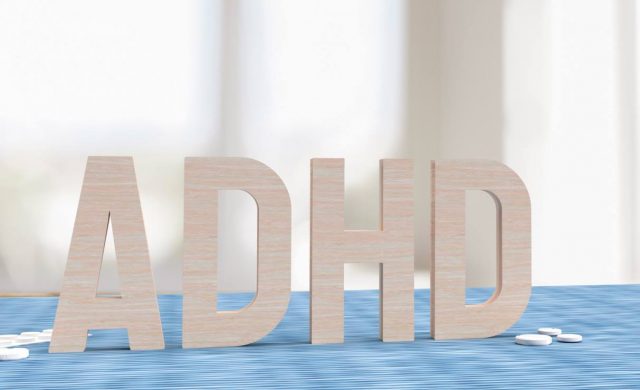Living with Attention Deficit Hyperactivity Disorder (ADHD) can be both a journey of creativity and challenges. For adults with ADHD, managing daily tasks, responsibilities, and the demands of modern life can become overwhelming, leading to a state of exhaustion commonly known as ADHD burnout. In this comprehensive guide, we will explore what ADHD burnout is, its symptoms, and most importantly, effective strategies to prevent and manage it. By understanding and addressing ADHD burnout, individuals can lead fulfilling lives while minimizing the impact of exhaustion on their well-being.
Understanding ADHD Burnout
ADHD burnout is a state of physical, emotional, and mental exhaustion that often occurs as a result of prolonged stress and strain experienced by individuals with ADHD. It is more than just feeling tired after a long day; it is an overwhelming sense of fatigue that impacts various aspects of a person’s life. Let’s delve deeper into the key aspects of ADHD burnout:
Chronic Stress and Demands
ADHD burnout is often triggered by chronic stress and the continuous demands of daily life. Adults with ADHD may struggle with executive functioning, time management, and prioritizing tasks, leading to feelings of frustration and being overwhelmed. As responsibilities and expectations increase, cumulative stress can lead to burnout.
Hyperfocus and Energy Depletion
Individuals with ADHD often experience periods of hyperfocus, during which they become intensely absorbed in a particular task or activity. While hyperfocus can be a strength, it can also lead to the depletion of energy and neglect of other essential responsibilities, eventually contributing to burnout.
Emotional Regulation Challenges
ADHD can also impact emotional regulation, leading to frequent mood swings, irritability, and emotional exhaustion. Managing emotions and coping with daily stressors can be draining, adding to the burden of burnout.
Recognizing ADHD Burnout Symptoms
Identifying the signs of ADHD burnout is crucial to taking proactive steps in preventing and managing its impact. Some common symptoms of ADHD burnout include:
Chronic Fatigue
Individuals experiencing ADHD burnout often feel constantly tired, regardless of the amount of rest they get. This goes beyond just feeling sleepy; it’s a pervasive sense of exhaustion that can impact your physical health, mental clarity, and emotional well-being.
Increased ADHD Symptoms
Another common symptom of ADHD burnout is an increase in typical ADHD symptoms. This might include heightened impulsivity, difficulty concentrating, increased forgetfulness, or more intense mood swings.
Emotional Overwhelm
Feelings of overwhelm, frustration, or hopelessness can also be indicative of ADHD burnout. It might feel like everyday tasks are too challenging to handle or that managing your ADHD symptoms is an insurmountable task.
Social Withdrawal
Individuals experiencing ADHD burnout might find themselves withdrawing from friends and family, either because socializing feels too exhausting or because they fear their burnout will negatively impact their relationships.
Strategies to Prevent ADHD Burnout
Preventing ADHD burnout requires a proactive approach that focuses on managing stress and building resilience. By incorporating effective strategies into daily life, individuals with ADHD can minimize the risk of burnout and maintain their well-being. Here are some additional insights into the strategies mentioned earlier.
Prioritize Self-Care
Self-care is not a luxury but a necessity for individuals with ADHD. Establishing daily routines that prioritize self-care activities is essential for maintaining physical and emotional well-being. Regular exercise helps release endorphins, which can boost mood and reduce stress. Ensuring sufficient sleep is crucial, as lack of sleep can exacerbate ADHD symptoms and increase the risk of burnout. Additionally, adopting healthy eating habits can help stabilize energy levels and improve overall health.
Set Realistic Goals
Breaking tasks into smaller, manageable steps is a practical approach to preventing overwhelm and burnout. Setting realistic goals helps individuals maintain focus and motivation without feeling daunted by the scope of a task. Prioritizing tasks based on importance and deadlines allows for effective time management. It’s important to avoid overcommitting and taking on too many responsibilities simultaneously, as this can lead to increased stress and exhaustion.
Utilize Support Systems
Connecting with family, friends, or support groups can provide a valuable source of encouragement, understanding, and validation. Sharing experiences and challenges with others who may have similar experiences can foster a sense of belonging and reduce feelings of isolation. Support systems can also offer practical assistance, such as helping with tasks or providing a listening ear during stressful times. By reaching out and maintaining strong social connections, individuals can find solace and strength in their support networks, enhancing resilience against burnout.
Practice Mindfulness
Mindfulness techniques are powerful tools for managing stress and promoting emotional well-being. Incorporating practices such as meditation or deep breathing exercises can help individuals ground themselves in the present moment, reducing anxiety and rumination about the past or future. Mindfulness encourages self-awareness and acceptance, allowing individuals to acknowledge their emotions without judgment.
Seek Professional Help
Working with a therapist or counselor experienced in ADHD management can be instrumental in preventing burnout. These professionals can offer personalized guidance and support, helping individuals develop coping strategies tailored to their unique challenges. A therapist can also provide a safe space to explore emotions, process difficulties, and learn practical techniques to manage ADHD-related stressors.
Managing ADHD Burnout
When ADHD burnout has already taken hold, it is crucial to implement strategies to manage its effects effectively and enhance your well-being. Here are some detailed strategies to cope with ADHD burnout:
Take Breaks
Give yourself permission to take regular breaks throughout the day to recharge and refocus. These pauses can take many forms, such as brief naps, meditative moments, or stepping outside to enjoy some fresh air. You might also consider adopting mindfulness practices that can help your mind disengage from stressors and tune into the present moment. Remember, these breaks are not indulgences; they’re essential components of a healthy coping strategy.
Delegate Tasks
One key strategy in managing ADHD burnout is to seek support from others and delegate tasks when possible. This might involve asking a coworker for help on a project, assigning chores to other household members, or hiring professional services to lighten your workload. Recognize that you don’t have to do everything on your own and that asking for help is not a sign of weakness but a practical strategy for managing your mental health.
Learn to Say No
When coping with ADHD burnout, it becomes particularly important to practice setting boundaries and saying no to additional commitments that might exacerbate your exhaustion. This might feel uncomfortable, especially if you’re used to always saying yes, but remember that your well-being is a priority. Saying no to others can sometimes mean saying yes to your own health and recovery.
Adjust Expectations
During periods of ADHD burnout, it’s essential to be compassionate with yourself and adjust your expectations accordingly. You may not be able to function at your usual capacity, and that’s okay. Recognize that it’s not a failure to take things at a slower pace; it’s a necessary adjustment that reflects your current reality. Self-compassion can go a long way in easing the pressure that contributes to burnout.
Engage in Positive Coping Mechanisms
Burnout can tempt us to turn to unhealthy coping mechanisms, such as substance use or avoidance. Instead, opt for positive ways to cope with stress. Engage in hobbies that bring you joy and relaxation, whether that’s painting, reading, or going for a run. Make time to connect with loved ones, sharing your experiences and drawing strength from their support. Practice relaxation techniques like deep breathing exercises, yoga, or guided meditations to help reduce stress and promote mental clarity.
Conclusion
ADHD burnout is a real and challenging experience that affects many adults with ADHD. However, with awareness and proactive strategies, it is possible to prevent and manage burnout effectively. By prioritizing self-care, seeking support, and incorporating healthy coping mechanisms, individuals with ADHD can lead fulfilling lives while minimizing the impact of exhaustion on their well-being. Remember that seeking professional help and working with a supportive network can be invaluable in navigating the complexities of ADHD burnout and moving towards a more balanced and resilient life.

Speaks from heart, always too passionate and driven by emotions. Spins the words with kindness & sharpness, intriguing your ever-inscrutable minds.




